In this article, we will look at the Fundamentals of Geomagnetism. Geomagnetism is the study of the Earth’s magnetic field and its behaviour. It encompasses the principles, processes, and interactions that govern the magnetic field and how it affects the planet and its environment. In this article we will study the fundamentals of geomagnetism.

Table of Contents
What is Geomagnetism?
Geomagnetism is a branch of science that studies the magnetic field of the Earth. The Earth’s magnetic field is caused by the motion of molten iron in the Earth’s core. The magnetic field extends from the Earth’s interior to the surrounding space, where it interacts with the solar wind, a stream of charged particles that constantly flow from the Sun. The interaction between the solar wind and the Earth’s magnetic field results in many interesting phenomena, such as the Northern and Southern Lights.
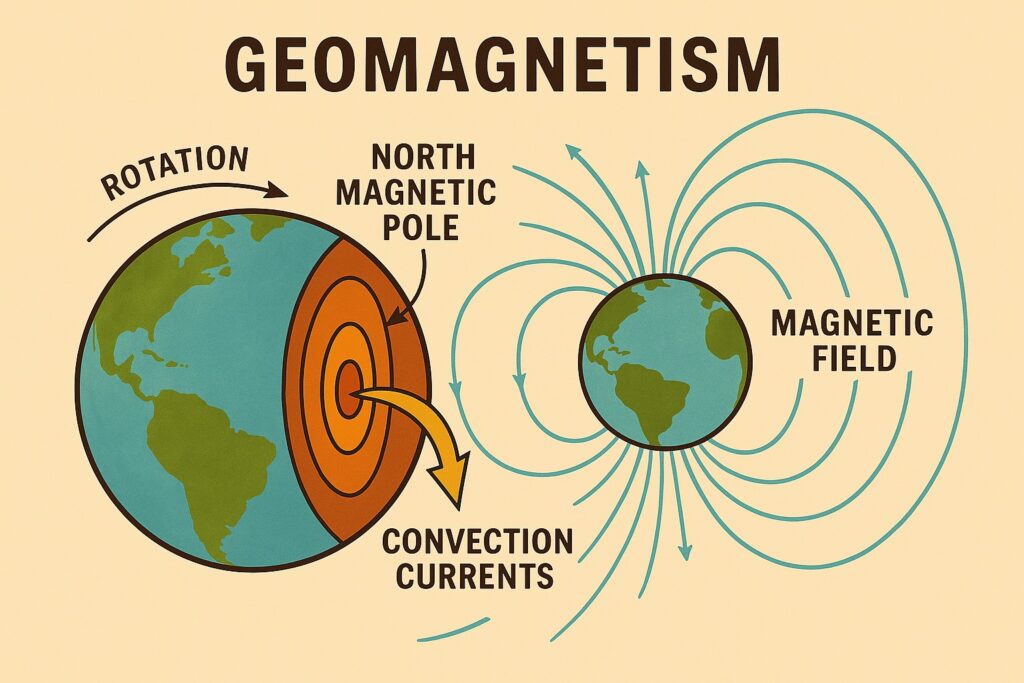
But, How Does Earth Produce Magnetic field?
The Earth’s magnetic field is generated by the motion of molten iron in its core. The Earth’s core is divided into two layers: the inner core, which is solid and made mostly of iron, and the outer core, which is liquid and also mostly composed of iron.
The liquid iron in the outer core is in constant motion due to the convection currents caused by heat from the core and the Earth’s own rotation. As the charged molten iron moves, it generates electric currents, which in turn create a magnetic field. This process is known as the dynamo effect.
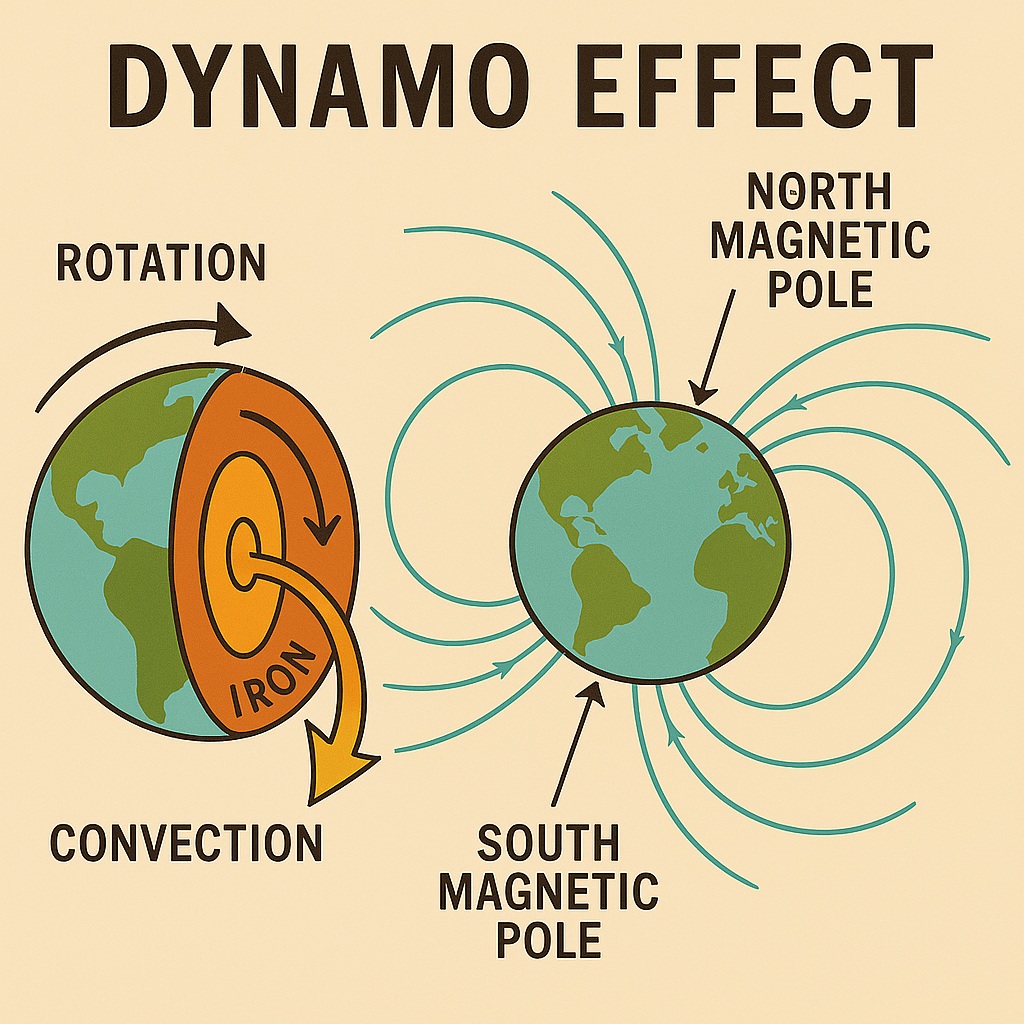
The Earth’s magnetic field is also affected by the Earth’s rotation. The rotation causes the magnetic field lines to become distorted, resulting in the offset magnetic poles and the creation of the magnetosphere, which protects the Earth from the solar wind and other charged particles.

Overall, the Earth’s magnetic field is a complex and dynamic system that is the result of the interplay between the Earth’s core, its rotation, and other external factors.
"The movement of this liquid metal, driven by heat escaping from the inner core, generates electric currents. These currents, in turn, produce a magnetic field in a process called a geodynamo."
Reversal of Magnetic Field of Earth
The magnetic field of the Earth is caused by the motion of molten iron in its core. The direction of the magnetic field can change over time, and the polarity of the magnetic field can reverse, meaning that the magnetic north and south poles switch places.
The reversal of the Earth’s magnetic field is a natural process that has occurred many times throughout the planet’s history. Geological records show that the Earth has experienced hundreds of such reversals over the past few hundred million years, with the most recent one occurring about 780,000 years ago.
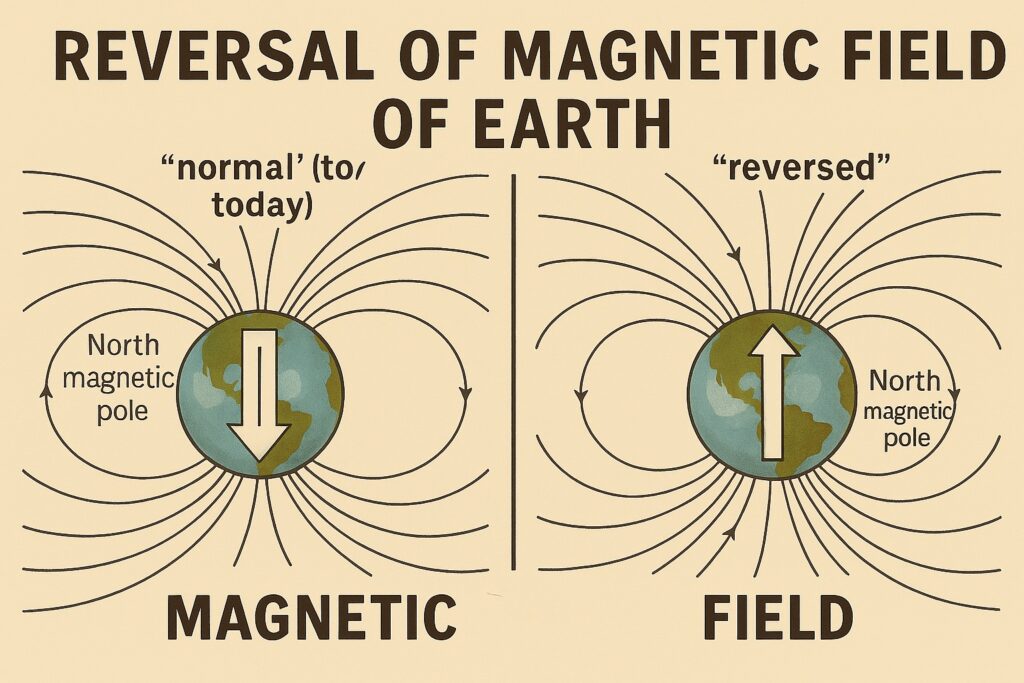
Scientists believe that the reversal of the Earth’s magnetic field is a gradual process that can take thousands of years to complete. During this time, the magnetic field weakens and may become more complex, with multiple poles developing before finally flipping to the opposite polarity.
The reversal of the Earth’s magnetic field is not expected to have any significant impact on life on Earth, although it may affect navigation systems that rely on the magnetic field. However, some scientists have suggested that a weakened magnetic field during a reversal could allow more cosmic radiation to reach the Earth’s surface, potentially affecting electronic systems and causing other disturbances in the atmosphere.
But, Is there any Scientific Evidence of such Reversal?
Yes, there is scientific evidence that the Earth’s magnetic field has reversed many times throughout its history. This evidence comes from a variety of sources, including geological records, the study of ancient igneous rocks, and measurements made by satellites and other instruments.
One piece of evidence comes from the study of rocks and sediments, which can preserve a record of the Earth’s magnetic field over time. By analyzing the magnetism of these materials, scientists can reconstruct the orientation and strength of the Earth’s magnetic field at various points in the past. This research has shown that the Earth’s magnetic field has reversed many times.
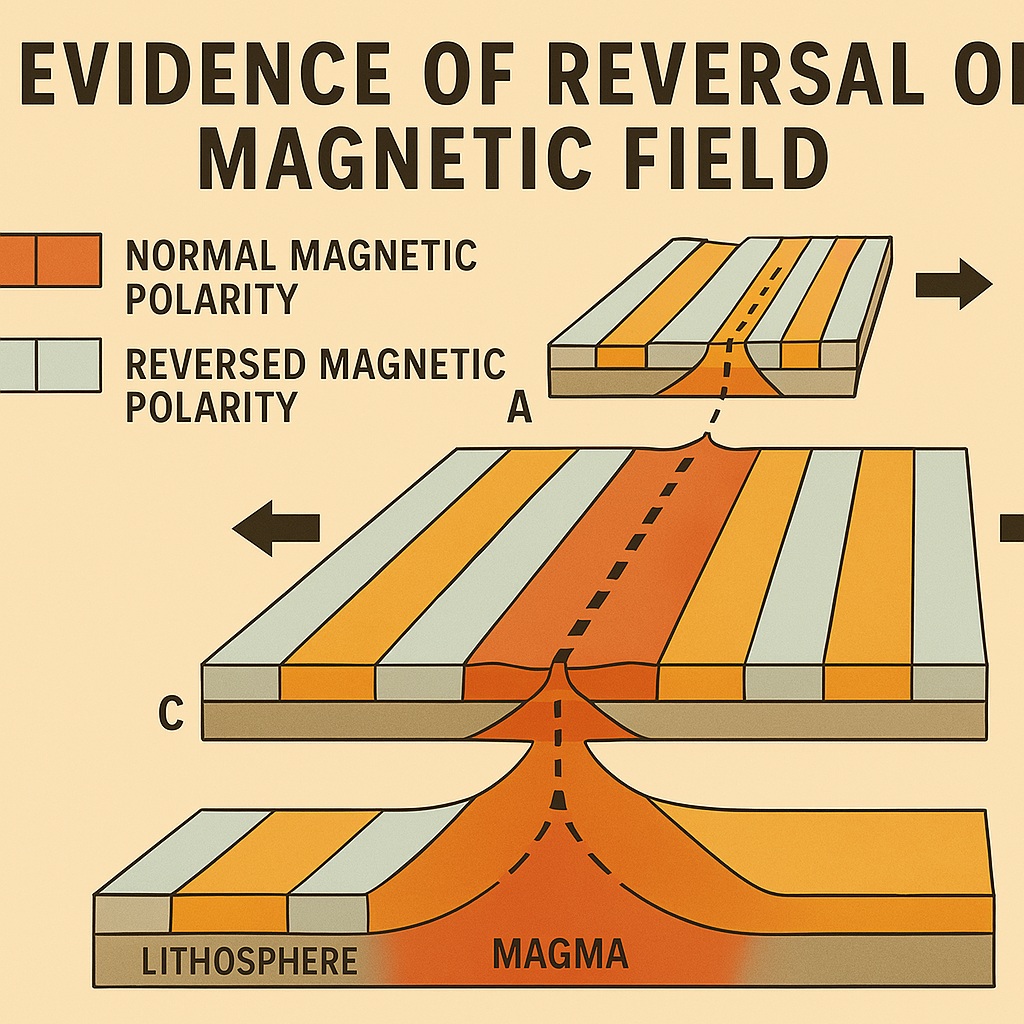
Another source of evidence comes from measurements made by satellites and other instruments. For example, NASA’s THEMIS mission has measured changes in the Earth’s magnetic field over time, and has observed that the field is weakening in some areas. This weakening could be a sign that the Earth’s magnetic field is in the process of reversing.
What is Solar Storm?
A solar storm is a disturbance in the Earth’s magnetic field caused by changes in the sun’s magnetic field. Solar storms can produce a wide range of effects, including auroras (also known as the Northern or Southern Lights), radio blackouts, and geomagnetic storms that can interfere with satellite communications, power grids, and other infrastructure.
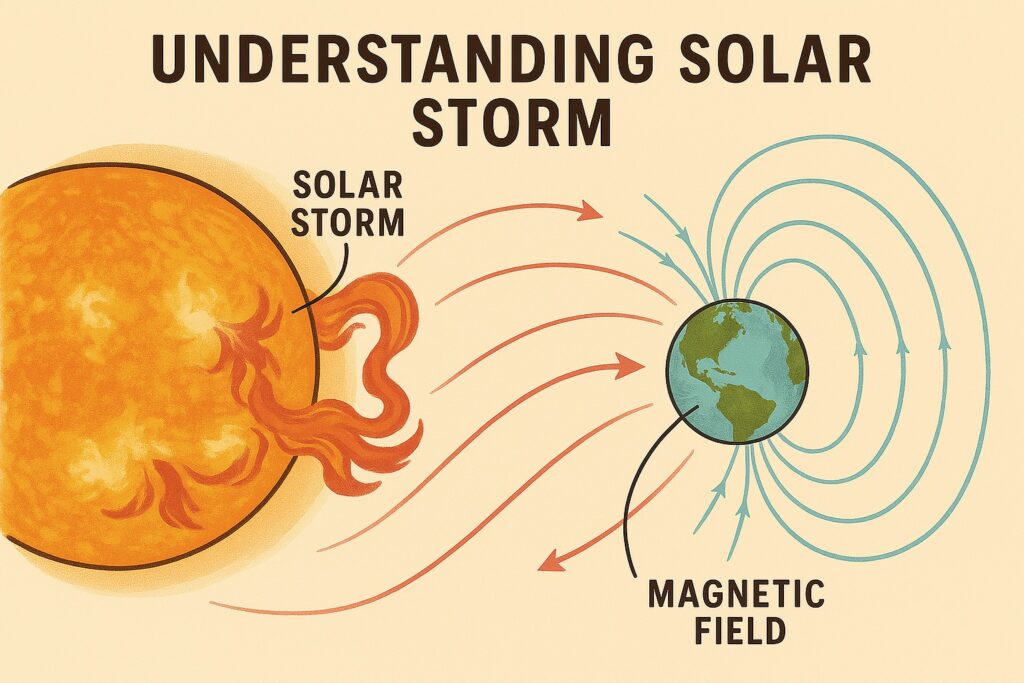
These storms are caused by eruptions on the sun’s surface, such as solar flares and coronal mass ejections (CMEs), which release huge amounts of energy and particles into space. When these particles collide with the Earth’s magnetic field, they can create a range of effects, from beautiful light displays in the sky to disruptions of technological systems on Earth.
Does other Planets have Magnetic fields like Earth?
Several planets in our solar system have magnetic fields, although their strength and nature can vary significantly. Planets in our solar system that have magnetic fields similar to Earth:
Mercury: Mercury has a weak magnetic field, about 1% as strong as Earth’s magnetic field, but it is important because it is the only other inner planet besides Earth known to have a magnetic field.
Jupiter: Jupiter has a very strong magnetic field, about 20,000 times stronger than Earth’s magnetic field. Its magnetic field is the largest structure in our solar system and creates intense radiation belts around the planet.
Saturn: Saturn has a magnetic field similar in strength to that of Jupiter, and it also creates radiation belts around the planet.
Uranus: Uranus has a tilted magnetic field that is not centered at the planet’s core, but rather offset by about 59 degrees. Its magnetic field is also weaker than that of Earth, Jupiter, and Saturn.
Neptune: Neptune has a magnetic field that is similar in strength to that of Uranus, but it is more symmetrically centered around the planet’s core.
Mars: Mars has a weak magnetic field, which is less than 1% as strong as Earth’s. It is thought to be caused by remnant magnetization from ancient lava flows on the planet.
Venus: Venus does not have a significant magnetic field, which means it is more exposed to the solar wind and other sources of charged particles in space.
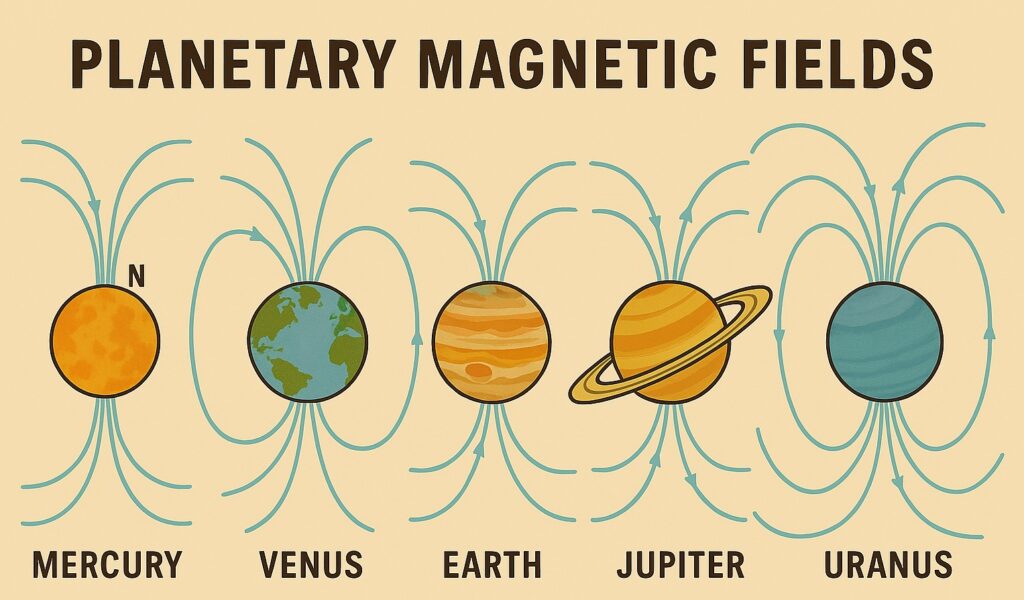
Important Definitions
Magnetic Dipole: The Earth’s magnetic field is generated by the motion of electrically charged particles in its core, which acts as a magnetic dipole. This means that the Earth’s magnetic field has two poles, a north and a south pole, like a bar magnet.
Magnetic Field: The Earth’s magnetic field extends from its interior out into space and influences the behavior of charged particles, such as the charged particles in the solar wind. It also affects navigation and communication systems, as well as the behavior of satellites and spacecraft.
Paleomagnetism: Paleomagnetism is the study of the Earth’s magnetic field in the past, based on the magnetic properties of rocks and minerals. By analyzing the orientation of magnetic minerals in rocks, scientists can determine the direction of the Earth’s magnetic field at the time the rock formed, providing insights into the history of the planet’s magnetic field.
How magnetic field protects life on Earth?
The magnetic field of Earth plays a critical role in protecting life on our planet by shielding us from harmful solar and cosmic radiation.
The magnetic field is created by the movement of molten iron in the Earth’s core, which generates electric currents and produces a magnetic field that extends out into space. This magnetic field acts as a shield, deflecting the majority of the charged particles that come from the Sun and other sources in space.
Without this protective magnetic field, these charged particles would penetrate the Earth’s atmosphere and reach the surface, causing harmful effects on living organisms, such as DNA damage and increased cancer rates.
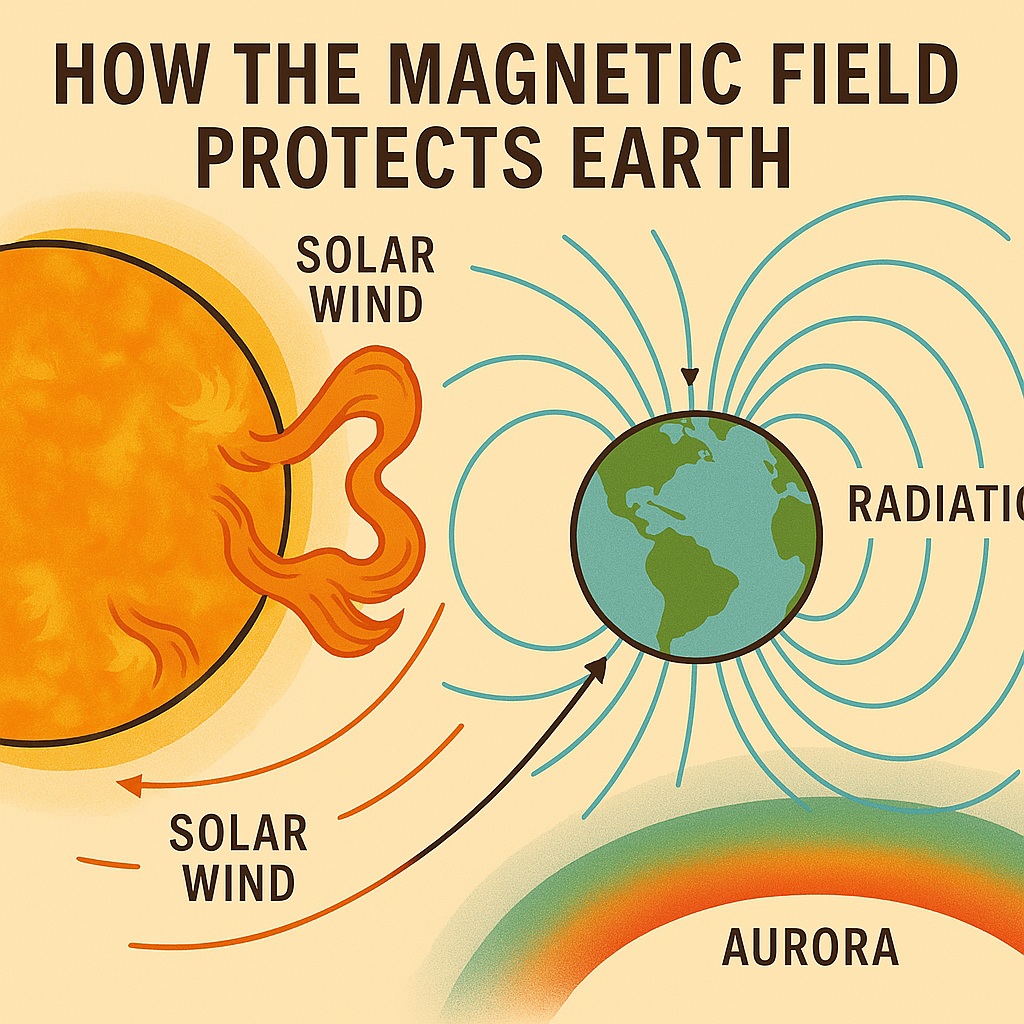
In addition, the magnetic field helps to maintain the atmosphere by preventing it from being stripped away by the solar wind. This protection allows the Earth to retain a stable atmosphere, which is essential for the development and maintenance of life as we know it.
Overall, the Earth’s magnetic field plays a crucial role in creating a habitable environment for life on our planet. One of the reasons that there is no atmosphere at Mars is that its magnetic field is turned off which led to the loss of carbon dioxide due to scavenging of ions by the solar wind.
What is Magnetic Dip?
Magnetic dip, also known as magnetic magnetic inclination angle, refers to the angle between the horizontal plane and the direction of the Earth’s magnetic field at a specific location on the Earth’s surface. In other words, it is the angle that a magnetic compass needle makes with the horizontal plane at that location.
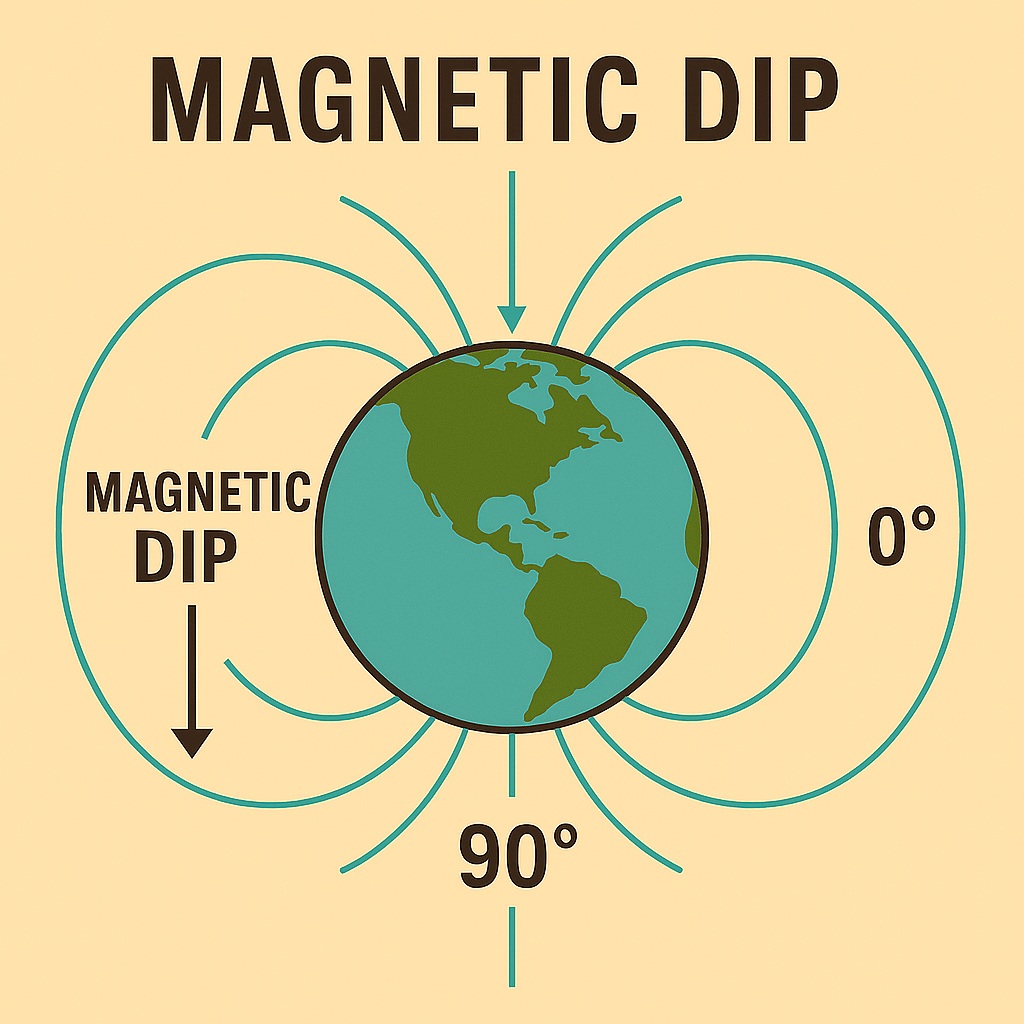
At the magnetic equator, the magnetic dip is 0 degrees (i.e., the magnetic field lines are parallel to the Earth’s surface), while at the magnetic poles, the magnetic dip is 90 degrees (i.e., the magnetic field lines are perpendicular to the Earth’s surface). At other locations, the magnetic dip varies depending on the latitude and longitude of the location.
The magnetic dip is an important parameter in navigation, as it helps in determining the direction of the Earth’s magnetic field and the orientation of a magnetic compass needle. It is also used in scientific research to study the Earth’s magnetic field and its variations over time.
What is Magnetic Declination?
Magnetic declination, also known as magnetic variation, is the angle between true north (geographic north) and magnetic north (the direction a compass needle points). Since Earth’s magnetic field is not perfectly aligned with its rotational axis, magnetic declination varies depending on location and can change over time due to shifts in the planet’s magnetic field.
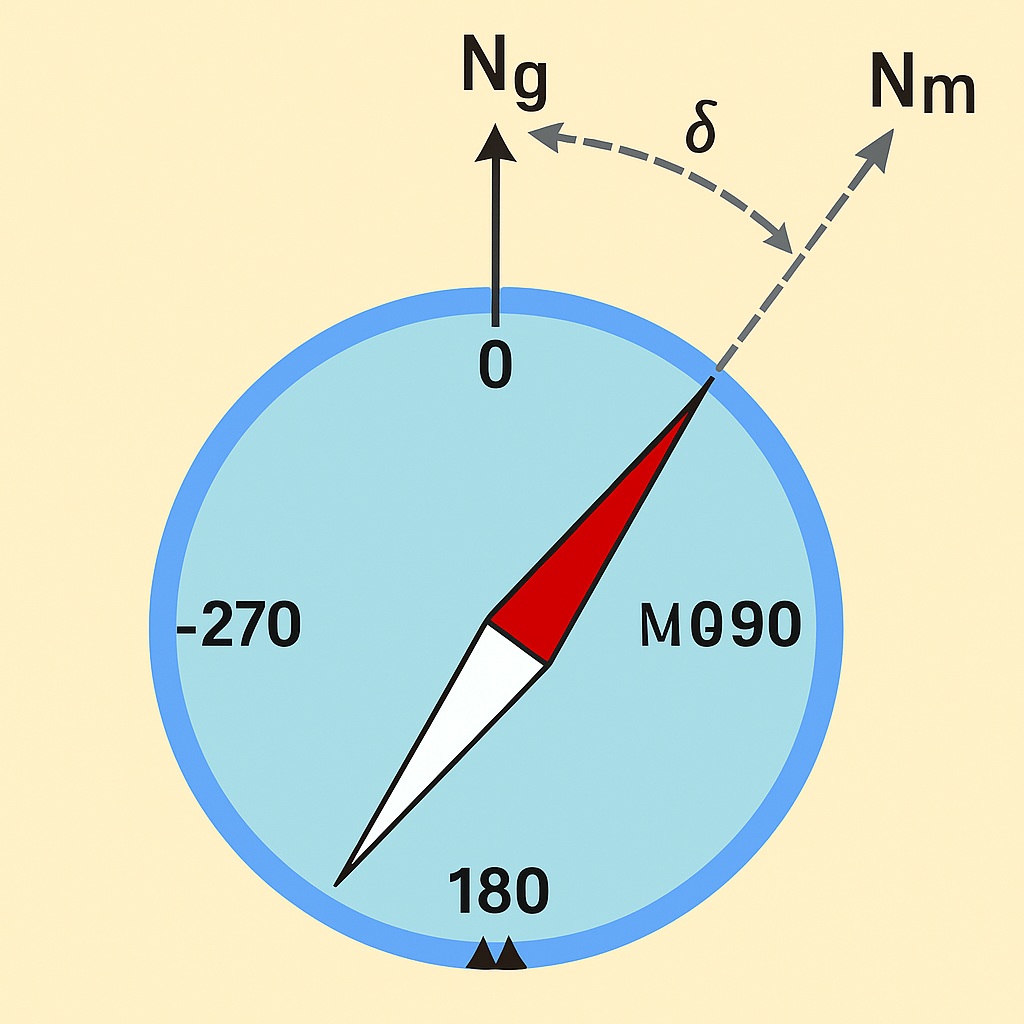
Magnetic declination refers to the angle between magnetic north (the direction a compass needle points) and true north (the direction towards the Earth’s geographic North Pole) at a particular location on the Earth’s surface. The angle can be either east or west of true north, depending on the location.
Magnetic declination is caused by the Earth’s magnetic field, which is not aligned with the planet’s rotational axis. The angle of magnetic declination varies depending on the location and can also change over time, which is why it is important for navigators, surveyors, and other professionals to stay up-to-date on the current magnetic declination for their location.
Contribution of Frederick Vine and Drummond Matthews
Frederick Vine and Drummond Matthews are two British geologists who are best known for their work on geomagnetism, specifically for their contribution to the theory of plate tectonics.
In the early 1960s, Vine and Matthews were studying the magnetic properties of rocks on the ocean floor. They discovered that the rocks showed alternating bands of magnetization, with some bands pointing to magnetic north and others pointing to magnetic south. They also noticed that the bands were symmetrical, with the same pattern of magnetization on either side of a central ridge.

Vine and Matthews realized that this symmetrical pattern of magnetization could only be explained by the movement of the Earth’s tectonic plates. They proposed that as new oceanic crust was formed at mid-ocean ridges, it would acquire the magnetic orientation of the Earth’s magnetic field at the time. As the plates moved away from the ridges, the rocks would cool and solidify, “locking in” the magnetic orientation. Over time, the Earth’s magnetic field would change, resulting in a new pattern of magnetization on the ocean floor.
The discovery of this symmetrical pattern of magnetization on the ocean floor, now known as magnetic striping, provided strong evidence for the Theory of Plate Tectonics. Vine and Matthews’ work played a key role in the development of this important scientific theory, which revolutionized our understanding of the Earth’s structure and dynamics.